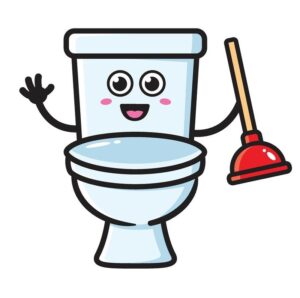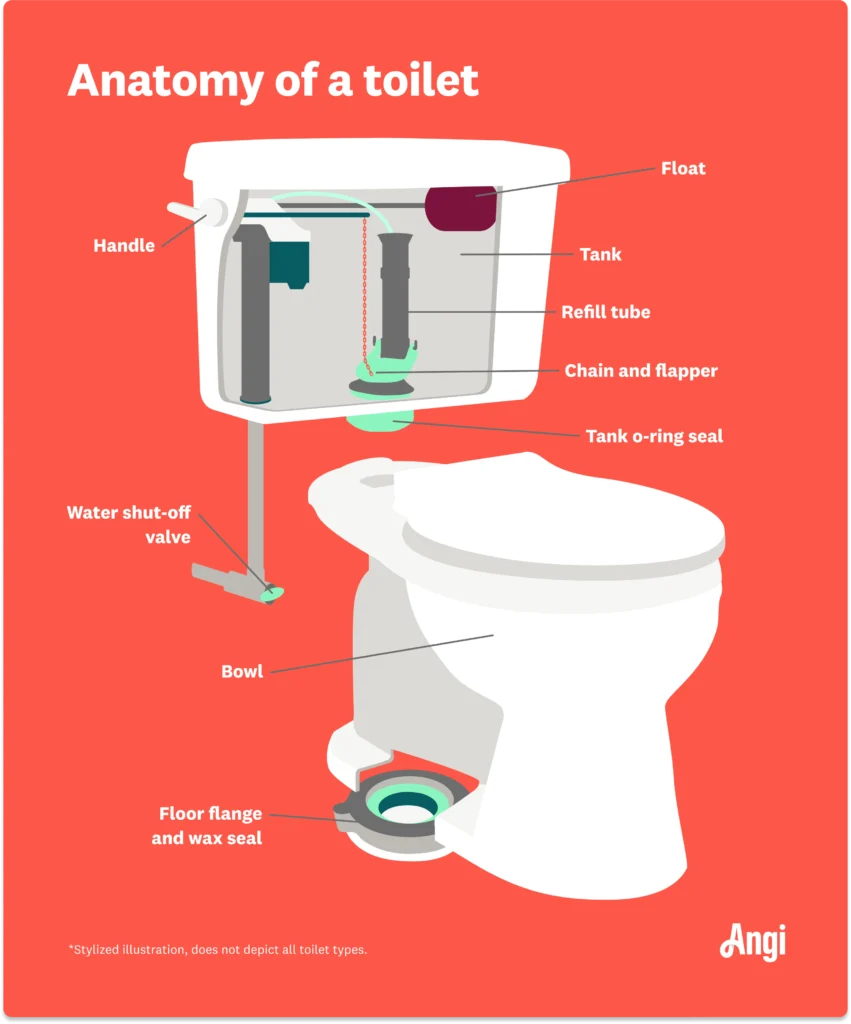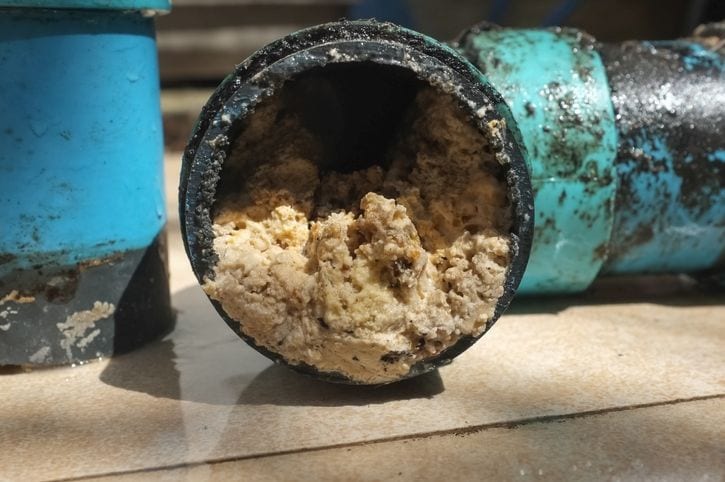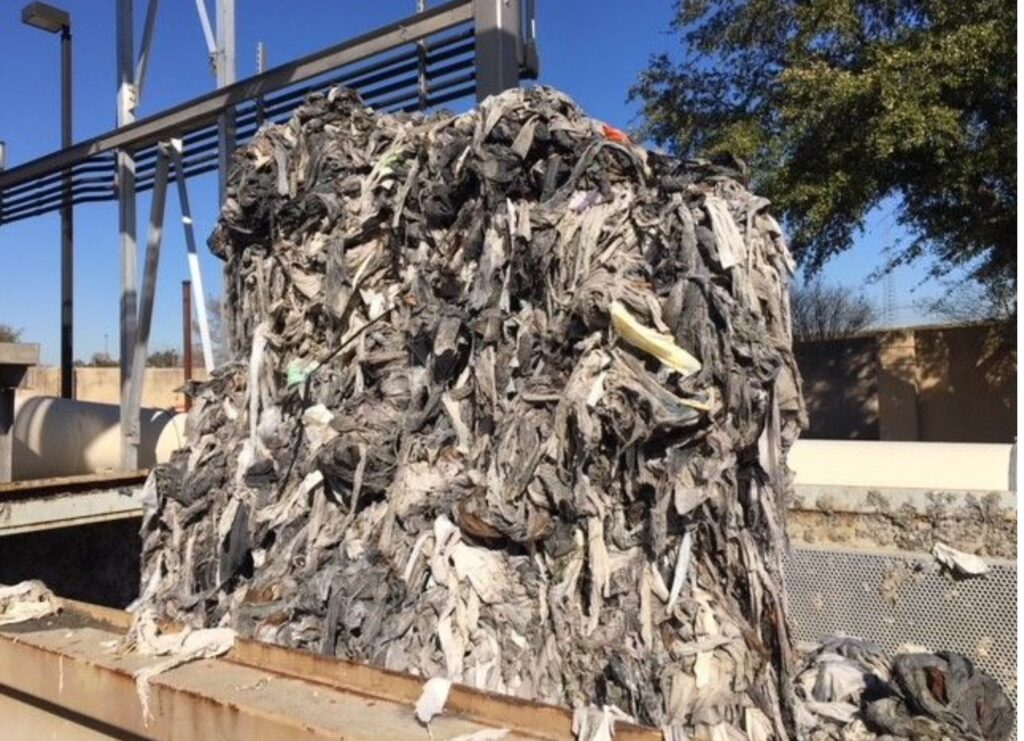The Job of the John
 Porcelain pony, loo, can, john, throne, honey bucket… there are a surprising number of names for the humble toilet! Despite its sundry synonyms, most people probably prefer not to think too hard about the old john’s important job. But, just what happens when a toilet flushes? Knowing where the guck goes might save you from some gruesome gross-outs!
Porcelain pony, loo, can, john, throne, honey bucket… there are a surprising number of names for the humble toilet! Despite its sundry synonyms, most people probably prefer not to think too hard about the old john’s important job. But, just what happens when a toilet flushes? Knowing where the guck goes might save you from some gruesome gross-outs!
The Anatomy of a Toilet
A toilet is made up of several internal and external parts. The ones you are probably most familiar with are the ones you can see — the flush handle, the bowl, the tank, and the lid. And you are probably pretty sure you know what each of these do. The bowl holds water and whatever else you put in it (only the three P’s please — pee, poop, and [toilet] paper)! The tank holds the extra water and internal parts, and the lid covers the bowl up when you don’t want  to see inside. Inside the toilet, however, several mechanisms are at work, including a float ball and rod, fill and flapper valves, a shut-off valve, and drain pipe, among other things. While each of these has a specific job, ultimately they work together with pressure and gravity to push water and waste down the toilet, past an S- or P-shaped bend that helps prevent backups, and into your sewer pipes. From there, you hope to never see or hear from that water and waste again.
to see inside. Inside the toilet, however, several mechanisms are at work, including a float ball and rod, fill and flapper valves, a shut-off valve, and drain pipe, among other things. While each of these has a specific job, ultimately they work together with pressure and gravity to push water and waste down the toilet, past an S- or P-shaped bend that helps prevent backups, and into your sewer pipes. From there, you hope to never see or hear from that water and waste again.
But What Happens Next?
There is still a lot of work to be done to make sure your waste doesn’t make an unwanted reappearance. It has to move through a series of pipes in your home and on your property before it meets the sewer main off your property. It is the homeowner’s responsibility to keep these 4-inch, 6-inch, or 8-inch pipes, usually called “laterals,” clear of debris to make sure that gravity and pressure can do its job. Build-up of items like wet wipes (even the ones labeled “flushable”), makeup wipes, cotton balls, Q-tips, sanitary items like tampons or pads, diapers, etc., can cause a real problem at this stage. These items might seem to flush down the first phase and make it past your S- or P-trap, but trouble is brewing below! The items will begin building up throughout the pipes, mixing with other concerning congestion that might have come down through your other drains — like fats, oils, and grease (FOG), which you should never send down your kitchen sink! It might also run into debris from root intrusion from nearby trees and bushes. As the items begin to pile up, so too does your household waste … and the last thing you want is for it to start creeping up back through your laterals and into your toilet and drains!
Where Does It Go From there?
If you are taking good care of your pipes — avoiding throwing in the wipes and fighting the FOG — the wastewater should move smoothly from the portion of the sewer lateral for which you or the owner of your home is responsible. From there, it moves into larger lateral pipes that your sewer collection provider maintains. If you live in Greenville County, that provider is likely us — MetroConnects! MetroConnects makes sure that your wastewater moves safely from where our laterals meet yours, all the way to Renewable Water Resources’ (ReWa) laterals and mains. ReWa is tasked with getting that wastewater cleaned up and back into the environment.


Why It Matters
The safety of your wastewater’s journey is MetroConnects’ utmost priority. Keeping it in the pipes and moving along to ReWa’s facilities helps keep our local water sources clean and clear of the contaminants that can be spread through waste. Backups in the pipes caused by wipes and other items, FOG, or root intrusion can lead to backups into your homes or Sanitary Sewer Overflows (SSOs) out of manholes, where the wastewater inevitably makes its way into groundwater or nearby rivers and creeks. Debris can also make its way to ReWa’s treatment facilities, causing clogs and the need for costly equipment repairs. Keeping these materials out of our wastewater stream is everyone’s responsibility. Even if you don’t see a backup on your end of the pipes, the clogs cause a costly headache for the community as a whole. Remember, we are in this together!
If you suspect a backup or other problem in your pipes, call MetroConnects first at (864) 277-4442. We are here to help!